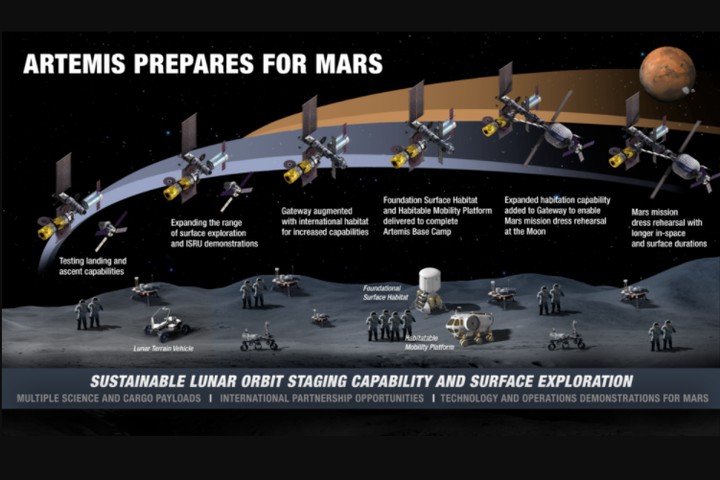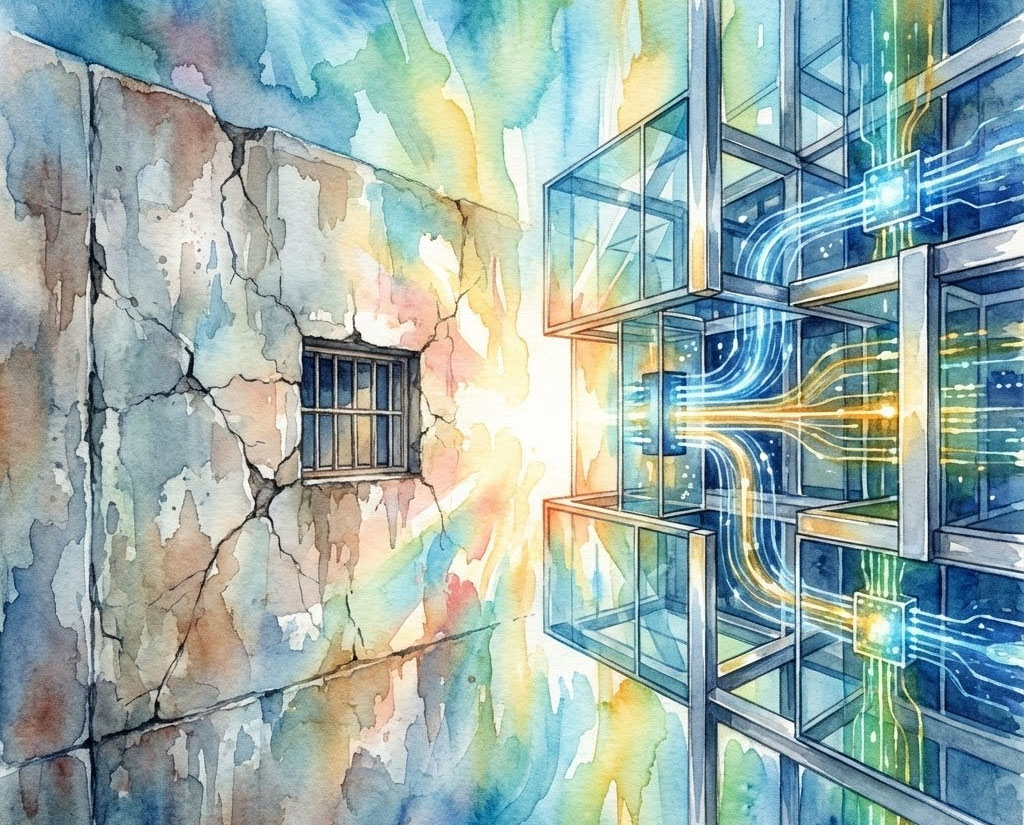
Article was written by Tom Haxton
Introducing the Artemis Base Camp
The Artemis Base Camp will be a permanent outpost at the lunar south pole in or around the Shackleton Crater. It is described in detail as part of NASA’s Lunar Surface Sustainability Concept and will be made up of three distinct elements:
1. The Lunar Terrain Vehicle (LTV). The LTV will be an unpressurised utility vehicle used for transport in and around the Base Camp. It will carry two astronauts in their spacesuits. The suits will be known as the Exploration Extravehicular Mobility Unit (xEMU).
2. The Habitable Mobility Platform. This will be a very high tech ‘camper van’ that will allow astronauts to make long trips away from the Base Camp for periods as long as a few weeks. With its pressurised cabin and robust life support systems it is designed for long-range exploration.
3. The Foundation Surface Habitat. This will be non-mobile and designed for short stays of a few days by up to four astronauts. It is pressurised and has integrated life support systems.
What is the Base Camp’s Purpose?
According to the NASA plan, ‘the core purpose of Artemis Base Camp will be to demonstrate new technologies...’ However, this understates the revolutionary impact the Artemis Base Camp will have on the future of lunar and deep space exploration. It will literally be the stepping-stone to Mars and beyond. As part of the Lunar Surface Innovation Initiative, NASA intends to develop technologies that will allow robot and human exploration and in particular:
- Utilizing the Moon’s resources, known as In Situ Resource Utilisation (ISRU);
- Establishing sustainable power during lunar day/night cycles;
- Building machinery and electronics that work in extreme environments, like super-chilly permanently shadowed craters;
- Mitigating lunar dust;
- Carrying out surface excavation, manufacturing and construction duties;
- Extreme access which includes navigating and exploring the surface/subsurface.
How will the Lunar Delivery Challenge Contribute?
Fundamental to the success of the outpost and the associated technology development programmes will be the ability to deliver the materials required to build and assemble the three elements of the Artemis Base Camp. Coupled to this will be the critical requirement for robust and reliable systems to unload and deploy the supplies necessary for the long-term operation of the facility. This will be part of the Commercial Lunar Payload Services. While the LTV, habitable mobility platform and foundation surface habitat will be permanently deployed, the astronauts will come and go so autonomous capability will be essential. The aim of NASA’s Lunar Delivery Challenge is therefore to use the wisdom of the HeroX crowd and knowledge from a wide range of industries to identify promising new approaches to logistics that could provide safer, more reliable and highly efficient methods for building and operating a remote Base Camp over a number of decades in an extremely hostile and unforgiving environment.
Be Part of History
The Artemis Base Camp will not be possible without a robust and effective logistical delivery and unloading system. Future exploration of the moon and ultimately the sending of humans to Mars will also be completely reliant on whichever system or systems NASA adopts. HeroX solvers therefore have an unprecedented opportunity to provide a solution that will underpin the most challenging and exciting decades in the history of human exploration. As the NASA Engineering lead for this challenge stated:
“I would encourage participation from anyone who has a suggestion that provides a solution or even partial solution to create an effective method to offload cargo on the moon.”
The deadline for submissions is January 19, 2021.
Preview








